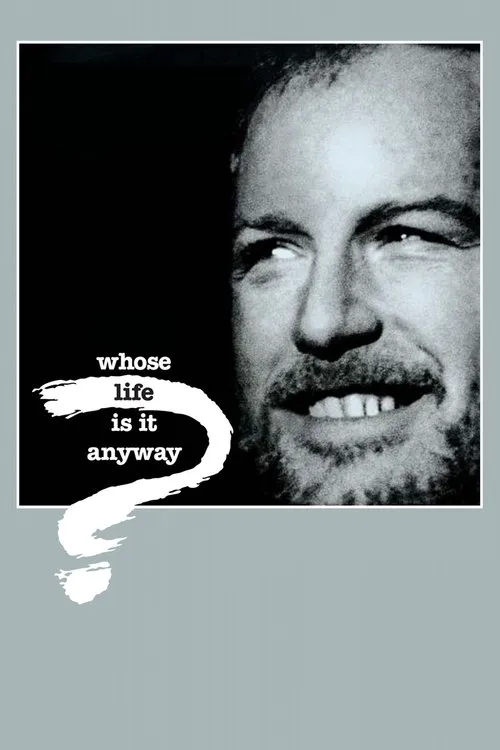Whose Life Is It Anyway?

Plot
Ken Harrison, a free-spirited artist, lived life to the fullest, driven by his passion for sculpture. His existence was defined by the creative process, and his art was an extension of himself. However, fate had other plans. One fateful day, Ken was involved in a devastating car accident that left him paralyzed from the neck down. The once vibrant and dynamic individual was now reduced to a mere husk of his former self. As Ken lay motionless in his hospital bed, he began to grasp the extent of his new reality. His ability to communicate was significantly impaired; he could only move his head and speak, a far cry from the artist who could once shape granite into masterpieces. The pain and anguish that washed over him like a tidal wave overwhelmed him, rendering him despondent and hopeless. Ken's inner turmoil was exacerbated by his growing desire to end his life. He felt like a prisoner in his own body, trapped in a living nightmare with no escape. His mind screamed out for release, yearning to be free from the suffering that had become his existence. The thought of living like this for the rest of his days was unbearable, and he became fixated on finding a way to end his life. During his time in the hospital, Ken formed friendships with some of the medical staff who cared for him. One particular nurse, Claire, stood out for her compassion and empathy. Despite the hospital's rules and regulations, she would spend hours with Ken, listening to his tales of artistry, sharing stories of her own life, and offering words of comfort in the darkness. Claire's kindness and understanding were like a balm to Ken's tormented soul, and he found solace in her presence. As Ken's fixation on ending his life intensified, he realized he needed help. Claire, along with another nurse, Judy, and a doctor named George, conspired to help him seek a legal way to end his life. With Ken's full consent, they embarked on a perilous journey to the courts, determined to advocate for his right to die. Their quest for justice led them to a high-profile trial, where the medical community and the law clashed in a battle over Ken's autonomy. The hospital's administrators, driven by their duty to preserve life at all costs, opposed Ken's wishes, insisting that his life had value, regardless of his current circumstances. The court proceedings were a media sensation, with lawyers, doctors, and advocates for the terminally ill and disabled weighing in on the moral and ethical implications. As the trial played out, Ken's story captivated the nation. The press fawned over his artistry, hailing him as a genius, and the public sympathized with his plight. The spotlight shone brightly on Ken's plight, and his message resonated with many who felt trapped in their own lives. His words, once dismissed as those of a selfish and egotistical individual, now conveyed the anguish and desperation that lay beneath the surface. With each passing day, Ken's trial reached a fever pitch. The courtroom was a battleground, with both sides determined to prove their points. Claire, Judy, and George fought valiantly on Ken's behalf, painting a picture of an artist who had lived a life of fullness and meaning, only to be cruelly snatched away by fate. As the verdict drew near, Ken's emotions seesawed wildly. He oscillated between hope and despair, unsure of what the future held. The court's ruling would decide the course of his life, determining whether he would be granted the one thing he desperately sought – freedom from the suffering that had become his existence. The day of reckoning arrived, and Ken's fate hung in the balance. The judge listened to the impassioned pleas from both sides, weighing the evidence and considering the moral dimensions of the case. The tension was palpable as the courtroom fell silent, waiting for the verdict. And then, in a moment that would change Ken's life forever, the judge announced his decision. After deliberating for an eternity, the court ruled in Ken's favor. The judge declared that Ken had the right to die, citing his autonomy and self-determination as the guiding principles. The room erupted into chaos, as news of the verdict spread like wildfire. Ken's face contorted with a mix of emotions, ranging from elation to despair. His journey had not yet ended; it had merely taken on a different trajectory. Ken's decision to end his life, though still his alone, no longer seemed like a selfish act. His story had become a testament to the human spirit, a reflection of the will to live and the will to die. In the end, Ken's battle for the right to die was a metaphor for the struggle for self-determination and autonomy that we all face at some point in our lives. His story served as a poignant reminder of the complexity and nuance of life, where freedom and dignity are intertwined like the intricate threads of a masterpiece.
Reviews
Recommendations




